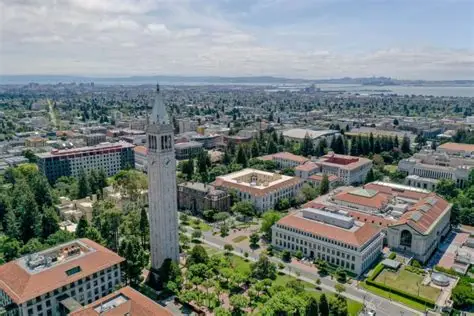
With the help of all the medical programmes on television, you may have thought to yourself that becoming a medical doctor may be the career for you. Over the next two blog posts I will take you through the steps, needed to achieve this goal, but as a regulated career, the requirements to qualify as a doctor differs from country to country. In this first article, I will focus on providing an overview of the steps required to train and work in the US, while in the second I will focus on the UK.
Qualifying in the United States
The United States is the most popular destination for Ivy Central students wanting to train to become a doctor so I will start by taking you through the different steps required to qualify from UK as a doctor.
Complete an undergraduate degree.
In the US a degree requires at least four years to complete. The first two years provide an opportunity to try out different areas of interest but will normally have some common thread running through them. Normally, as you approach the end of your second year you will need to ‘declare a Major’. This is the point where you state the area of study that you will concentrate on during your final two years and will be the subject you will do your final work. Although your major will be the focus of your work there is still plenty of time to study other areas, do internships etc.
If you want to be a doctor in the future you will need to have followed an undergraduate degree that demonstrates a broad general education that is strong in natural sciences. No set major is required however there are several areas that you will need to have covered, these included, Biology, Chemistry, Physics, and Maths. It will also help you greatly if you can use some of your time to gain experience in a medical setting, either by volunteering or as an intern. This experience will help you to make sure that being a doctor, which can be a very demanding field of work, is the right decision for you.
Some people refer to this as being a “Pre-med course’ and some schools will even offer a “Pre-med Major’ but this description can be misleading. As you have already read there is no specific major that you need to gain to be admitted to medical school.
The advantage that declaring a Pre-med pathway or major is that they are likely to link you to a “Pre-med Adviser’ who can advise you on the courses you study and help you prepare for the MCAT. Many non-pre-med courses will have these advisers available to you so the best advice is don’t get hung up on going to a ‘Pre-med college’, aim for colleges where you will fit in, that way you are more likely to do well and can progress to the next stage.
Take the Medical College Admissions Test (MCAT)
The MCAT is a multiple-choice, standardised test that is required by almost all medical schools in the USA. The subject areas covered by the test include, biology, general chemistry, organic chemistry, and physics, the test also assesses problem-solving, verbal reasoning, and written competency.
Most students doing the MCAT will complete it during the academic year proceeding their start at Medical College, often the final year of the undergraduate degree. You can take the test up to three times during that year but, depending on your circumstances it is generally better to get it out of the way as early as you can so that you have the time to complete the rest of your degree requirements.
The scores of any tests that you have taken will be reported to any Medical Schools you apply to and is an important piece of evidence that they will use when deciding on your application. Medical schools will consider other factors when making their decision, such as your overall academic performance, experience of medical settings, your enthusiasm and commitment to this type of work, and how you will fit into their setting.
Medical School
Like the undergraduate degree medical schools normally take four years, so eight years in total. It is a mix of medical training and education and is split into two parts.
The first two years are spent on book study and lab work covering pharmacology, pathology, anatomy, and biochemistry. You will also take the first step towards achieving certification by taking the first portion of the United States Medical Licensing Examination.
In the third and fourth years, students begin their clinical experience starting by completing a number of periods, called rotations, in different clinics and hospitals and covering areas such as neurology, radiology, and medicine. During this time students will work under attending physicians who will help them gain the practical experience necessary for the fourth year when they will begin their residency training.
When applying to medical school you will need to choose between applying for a programme that leads to becoming a medical doctor (MD), or an osteopathic doctor (DO).
In the USA, Medical Doctors are sometimes called allopathic physicians to differentiate them from osteopathic doctors.
Allopathic medicine is the classic form of medicine that is focused on looking for symptoms to diagnose and treat ailments.
DO’s practice osteopathic medicine, a form of medicine that is centered around a more holistic view of medicine than those trained in the more common form practiced by MD’s.
Both routes follow the same timescale and are similar in design although DO’s will do an additional 200 hours of training during their time in medical school. There are also differences in the registration process required by the two areas.
Residency
Once you graduate from medical school you are officially a doctor however you will need to complete a further period of training before you can become registered and practice medicine by yourself. This period of further training is called a residency and is a period of a doctor’s internship lasting for between three and seven years, depending on the area of medicine you wish to specialize in. The training is nearly all practical experience in a medical environment rather than learning in a classroom.
You will normally apply for your residency in your final year of medical school, there is usually an interview and a tour of the facility where you will be based. Having visited a number of opportunities you rank them in order of your preference, meanwhile, the places you have visited will rank all of the people that they have interviewed. There is then a process to match those applying for a residency with available residency opportunities.
As outlined above the period of a residency depends on what area you wish to specialize in, family practice, internal medicine, and pediatrics are normally three years while specialties such as surgery and urology are usually longer.
For some, a post-residency may be required to gain further training in particular sub-specialties such as geriatric or vascular medicine. Post-residency training can last from one to three years.
Most people say that the residency period is the most grueling part of becoming a doctor, particularly the first year. It is not unusual to work in excess of 45 hours a week and it can be as much as 80. A lot depends on the type of medicine you specialize in, some areas will require that you are on call on top of your ‘normal’ hours, in which case time can quickly add up.
The good news is that you can expect to be paid. Once again, the area you specialize in will influence how much you are paid but according to the American Medical Association, first-year residents were paid an average salary of between $40,000 and $50,000 a year in 2012. Those in their second and third year are normally paid more.
As a resident, you will be responsible for assessing patients, performing medical examinations, attending patient rounds, and performing treatments and diagnostic procedures. Additionally, you should expect to prescribe treatments and perhaps assist with surgical procedures or respond to emergencies.
During your first year, you will be closely supervised by senior residents and attending physicians, however, as you progress and gain more experience you are given greater responsibility and independence. By the time of your third year, you should expect to be supervising those in the first year of their residency.
Gaining a Licence
Before you can legally practice medicine you will need to be licensed by the state you intend to work in, each state has its own requirements. Most will expect at least 1 year of residency and the completion of a board certification exam in your area of medical specialty.
So that’s it, four years of undergraduate education, four years of medical school followed by your residency years and you are a fully qualified doctor. In the next article, I will be turning the focus onto the UK and exploring the steps required to qualify there.








